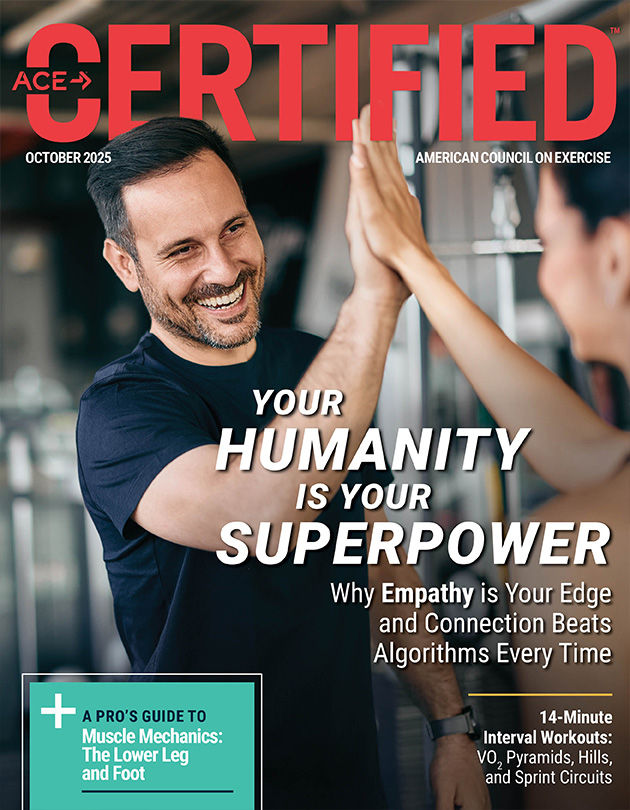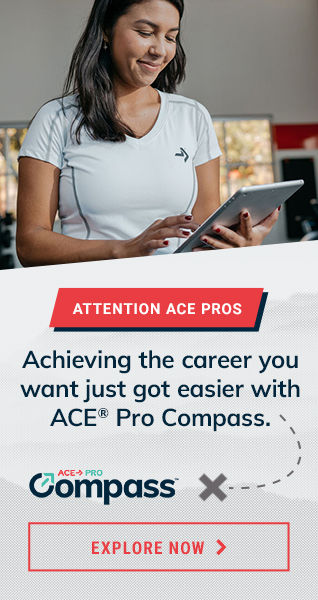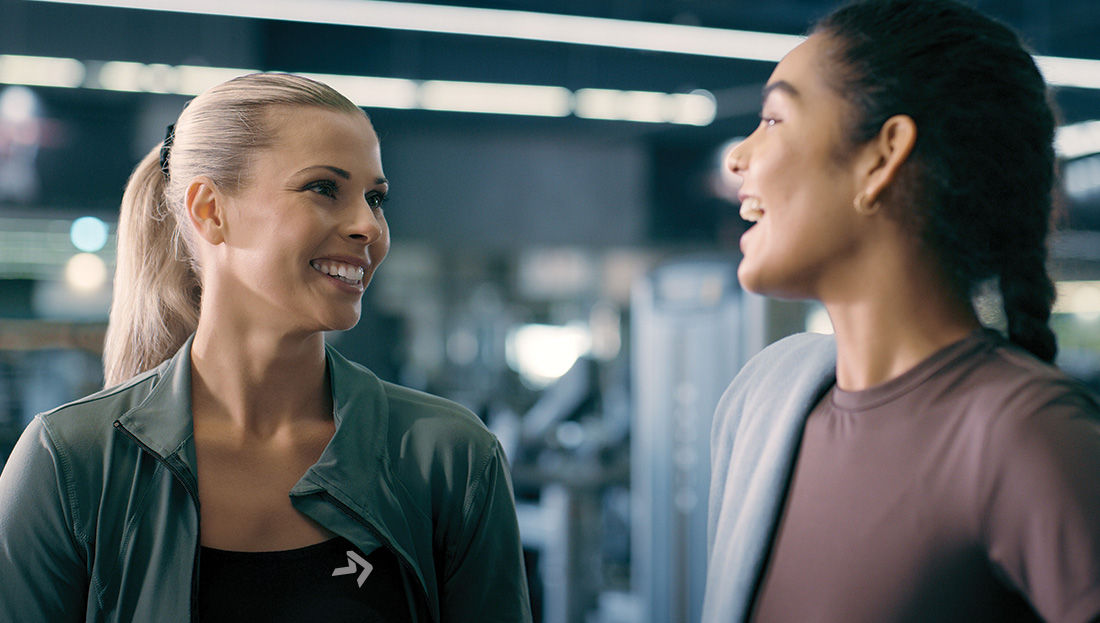
Between artificial intelligence (AI), constantly improving wearable technology, social media fitness influencers and the constant march of technological advancement, it can sometimes feel like health coaches and exercise professionals are fighting an unwinnable battle for their clients’ attention.
“If my watch can track my physical activity and nutritional intake, ChatGPT can program my workouts and Instagram influencers can offer advice and motivation, what do I need you for?”
It’s a challenging question, but the answer may lie in your empathy, experience and intuition, and in your ability to listen and observe. In other words, your humanity is the very thing that can separate you, not only from the onslaught of technology, but also from your competition. For that reason, it’s important to identify those skills that will help you establish stronger personal connections with your clients and, if possible, learn, practice and master them.
As Sabrena Jo, PhD, senior director of science and education at ACE, explains, “Technology can enhance what we do—it can give us data, efficiency and even some personalization—but it can’t replicate what makes the work of a health coach or exercise professional truly powerful: the human connection. Our ability to see people, hear them and hold space for their unique experiences is irreplaceable.”
To better understand how pros may feel about AI and other types of technology, and to identify what separates human from machine, I turned to one of my favorite sources of both entertainment and wisdom: sci-fi movies. Where better to learn about potential dystopian futures and humanity’s efforts to overcome or at least live in peace with the machines?

“Resistance Is Futile”
In “Star Trek: First Contact,” the Borg represent a collective AI hive mind that threatens humanity and tells us that “resistance is futile.” And it’s true that trying to push back against the tide of technological advancement is a losing fight. Instead, it’s important that the health and fitness industry, and the individual pros who comprise it, use technology to provide their clients with the best possible experience rather than trying to resist its impact.
Jessica Matthews, DBH, NBC-HWC, DipACLM, FACLM, professor and director/creator of the Master of Science in Integrative Wellness at Point Loma Nazarene University, reminds us that we are all in the business of helping people “live into the new” and make changes in their own lives, so we shouldn’t be afraid of doing the same in our businesses. “Technology,” she says, “is really no different from what we have the privilege of doing with other people, which is stepping into a new space and really learning how to navigate this new landscape.”
Your role is to help your clients make the most of the technology. For example, if they want to purchase a new wearable device, ask them some questions: “What do you want to track? Why is that important to you? How will knowing that information help you meet your goals?” Then, ask yourself, “How can I use the data gathered from my client’s wearable device to improve my services and build a better relationship with this client as they pursue their goals?”
Next, work with them to find ways to use the data to facilitate behavior change and long-term adherence by connecting the numbers with the reasons they want to get healthy or fit in the first place. The idea here is not to resist the technology, but to embrace it and make it part of your service offerings. After all, clients are going to use technology whether you like it or not. And, if you aren’t on board, they’ll likely find a trainer or coach who will be.
You can also prove your value to clients by helping them separate fact from fiction. Yes, there are countless so-called experts on social media, but it’s essential that your clients know whose advice to follow and that you can help them sort through all the noise. Dr. Matthews emphasizes that health coaches and exercise pros can help personalize that information. The amount and volume of information is only going to increase, so there’s a vital role to be played in helping each client know what’s best for them as an individual.
Also, be sure your clients know that AI cannot be implicitly trusted and that all sources should be verified. You don’t want them trying new exercises or workouts or following trendy diet plans based on invented sources or AI “hallucinations,” so remind them of the value of evidence-based practice.

“More Human Than Human”
In the film “Blade Runner,” this is how the Tyrell Corporation refers to its “replicants,” which blur the line between human and artificial life. The slogan reflects the fear that AI may someday pass humans by as artificial beings by adding emotion to their already superior strength and intelligence.
Fortunately, we’re not quite there yet and being human is still enough to separate you from AI and other technology. As Dr. Jo explains, “It starts with listening. Not just waiting for your turn to talk but really hearing someone. Asking open-ended questions. Reflecting back what you heard. Validating their experiences. When people feel seen and understood, they’re more likely to trust you and themselves.”
Dr. Matthews describes the desire to exist in relation to others—to belong to a group, to feel valued, to feel seen and understood—as a basic psychological need that all humans share. We may need it in different ways and to different degrees, but we all have that desire.
Another hallmark human skill is collaboration. AI may be able to prescribe a well-rounded workout plan, for example, but as an exercise pro you can work with clients to co-create a path that makes sense in their current context, whether that’s building around a client’s sports season, upcoming work schedule or even injuries or illness.
Sometimes, it’s about listening to your clients so that you can adjust to how they’re feeling in the moment. A plan is great, but it may not account for that day’s menstrual cramps, stress about exam week or fatigue from staying up all night with a sick kid. Those insights come from listening and treating the client with empathy and understanding.
Finally, Dr. Jo says you should never underestimate the power of consistency. “A warm welcome, remembering someone’s name, following up on something they said last week—these small moments build connection over time.”
You don’t have to be more human than human. Simply being human is more than enough.
“I’ll Be Back”
Admittedly, this one is a bit of a stretch, but there’s no way I’m leaving Arnold Schwarzenegger’s “Terminator” out of this article. Arnold’s connections to both sci-fi and fitness simply cannot be ignored.
In the “Terminator” franchise, “I’ll be back” reflects the relentless persistence of the machine, but in this context, it can be used to acknowledge your lack of omniscience and your willingness to learn and grow. When a client asks you a question that you don’t know the answer to, tell them you’ll be back at their next session with the answer.
Lauren Shroyer, vice president of product and innovation at ACE, in a blog entitled Your Value as an Expert in an Industry Flooded with Information (and Misinformation), wrote that she adopted the phrase, “I don’t know, but I’ll find out.” [Perhaps an Austrian accent would make that sound a bit cooler?]
She writes, “It’s a powerful phrase. It demonstrates your humility and willingness to learn, while retaining your role as the expert…. That response was always met with a respectful nod, because—and this is critical—I would always follow up and provide a factual, well-vetted response.”
Never be afraid to tell a client you don’t know something or to acknowledge a mistake. Sharing in those moments of fallibility can create a sense of connection between you and your clients. A shared humanity, if you will.
Can the “Soft Skills” That Make Us Human Be Learned?
The short answer is yes. That’s what health coaching, the ACE Mover Method, ACE ABC Approach and ACE RRAMP Approach are all about—listening, collaborating and creating an environment that facilitates success and empowers clients to make meaningful changes in their lives.
Just as an exercise pro learns about program design or movement technique, they can learn how to use active listening, empathy, reflecting, motivational interviewing and the many other behavior-change strategies and skills to better position their clients for success. The so-called soft skills that underpin behavior change are the key ingredients that help people enact changes and make those changes sustainable.
“Start by getting curious about yourself and others,” says Dr. Jo. “Self-awareness is the foundation for connecting with others authentically. From there, look for education that centers communication and coaching psychology. At ACE, we emphasize the ACE ABC Approach for exactly this reason: it’s a framework built around asking powerful questions, breaking down barriers and collaborating toward goals.”
“And like any skill,” she continues, “it takes practice. That might mean role-playing with colleagues, recording yourself during a session or reflecting after a client interaction. The more intention you bring to these moments, the more natural they become.”
Dr. Matthews agrees that there are things we can all learn about how to really engage with other people in a meaningful way. Active listening, or what she calls empathetic listening, is vital, and includes things like body language and tone of voice that AI cannot pick up on. Then, she says, “The biggest piece I see is the opportunity for exercise professionals or health coaches is not only to hear people, but to also ask those powerful questions when you’re hearing someone sharing. These are the questions that help them get underneath that to really understand what’s getting in their way.”
Final Thoughts: Your Role in an Increasingly Technology-driven Industry
Fear of technology, and AI in particular, is a centerpiece of sci-fi novels and movies for a reason. We’re all a little bit terrified of being rendered obsolete someday (take it from a writer in the age of ChatGPT!). But health coaches aren’t just technicians delivering workouts or wellness plans. Relational skills like empathy, intuition and adaptability will become even more valuable as you learn to incorporate technology into your everyday work.
As Dr. Jo says, health coaches and exercise pros are “facilitators of behavior change, partners in growth and sources of encouragement. That’s where the magic happens. Humanity isn’t a ‘soft skill.’ It’s a superpower.”
That humanity can take the form of motivational interviewing and the OARS person-centered communication skills, for example, but it can also show up as shared laughter after a tough set, the warmth of a smile as participants walk into class or the quiet presence of someone who believes in you. In a world that’s increasingly automated, where being hyperconnected with the world is causing people to feel less connected to one another, authenticity and that “human touch” become even more valuable.

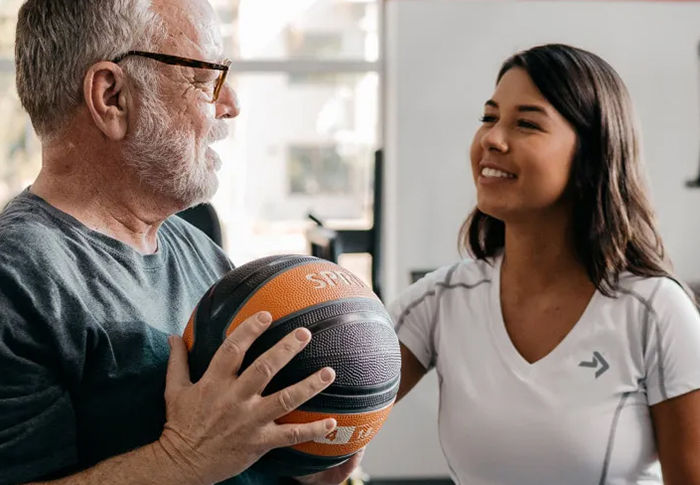
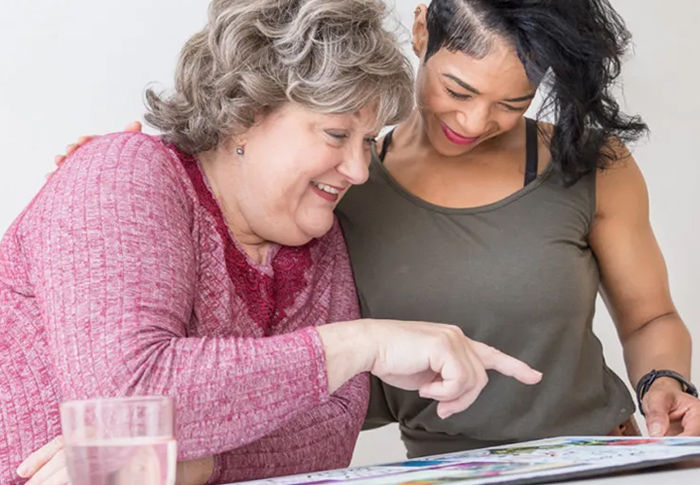
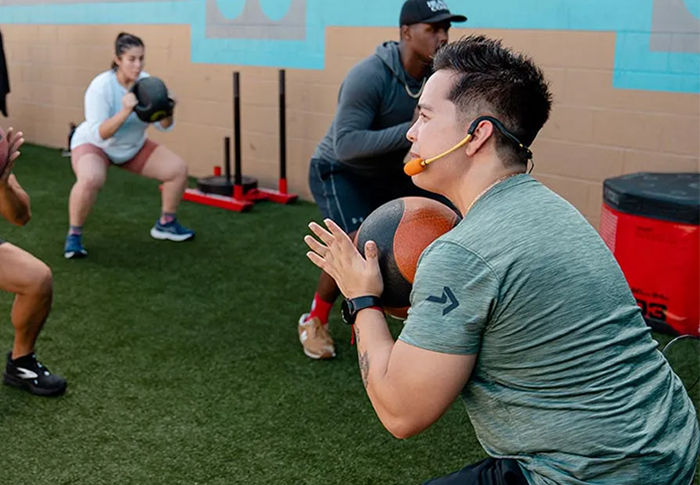
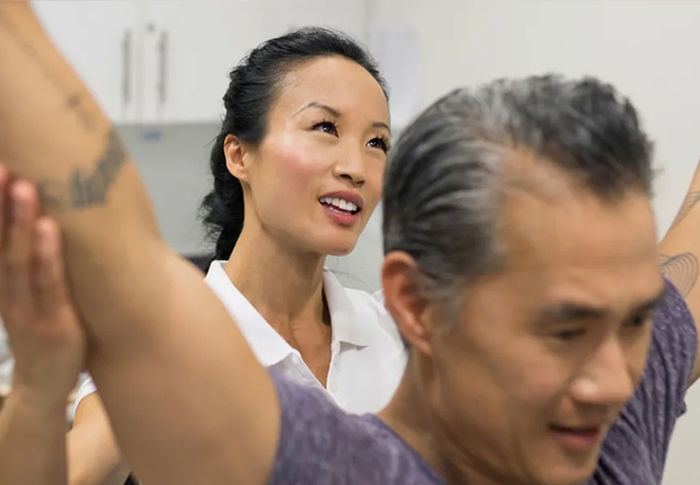
 by
by 